Omaha Postcard: Big Downtown Park Overhaul Shows How to Attract People
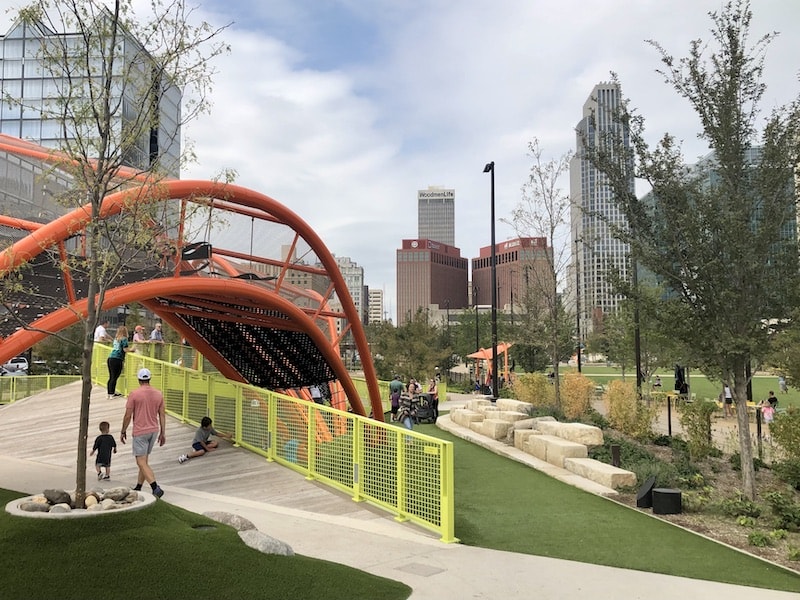
Published September 21st, 2022 at 11:30 AM
By Kevin Collison
We have one restless, striving neighbor to our north.
In July, Omaha finished the first phase of a $325 million overhaul of its downtown and riverfront parks, and what’s occurring 200 miles upriver offers an important lesson for Kansas City.
First a little contemporary history lesson, one that I witnessed while attending college there in the 1970s and as a reporter at the Omaha World-Herald in the 1980s.
In the early 1970s, civic leaders launched a grand plan to connect the heart of downtown Omaha with the river. The geography of both our cities is similar with downtowns located near the Missouri.
In a move that would horrify historic preservationists today, Omaha demolished an entire block-wide corridor of older buildings to create space for a linear park stretching roughly six blocks from 14th Street east toward the river.
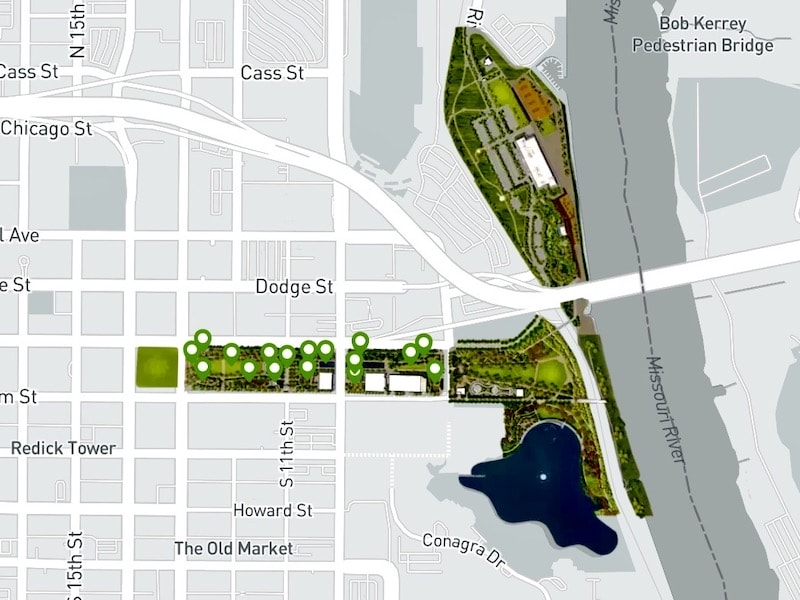
An overview of the Omaha RiverFront plan, the Eugene Leahy Mall (linear park) is the first of three existing parks being completely rebuilt in a $325 million overhaul.
The city hired top landscape architects to create a sunken park with a lagoon and walkways that stretched its length. At the east end, stepped pools continued another block. The idea was not only providing green space, but being a magnet for development along it.
At the downtown head of the park, the city built a new public library as a civic bookend.
The space was originally called the Central Park Mall, but was later renamed the Gene Leahy Mall after the Omaha mayor who got the project started.
In later phases, the city persuaded agribusiness giant ConAgra to build its corporate headquarters on a site east of the Leahy Mall, a move that completed the connection to the river.
Again, the price was monstrous when it came to preservation. An entire National Register District called Jobbers Canyon, warehouses much like our Garment District, were razed to fulfill Conagra’s vision of an uncluttered suburban-style campus around a big pond.
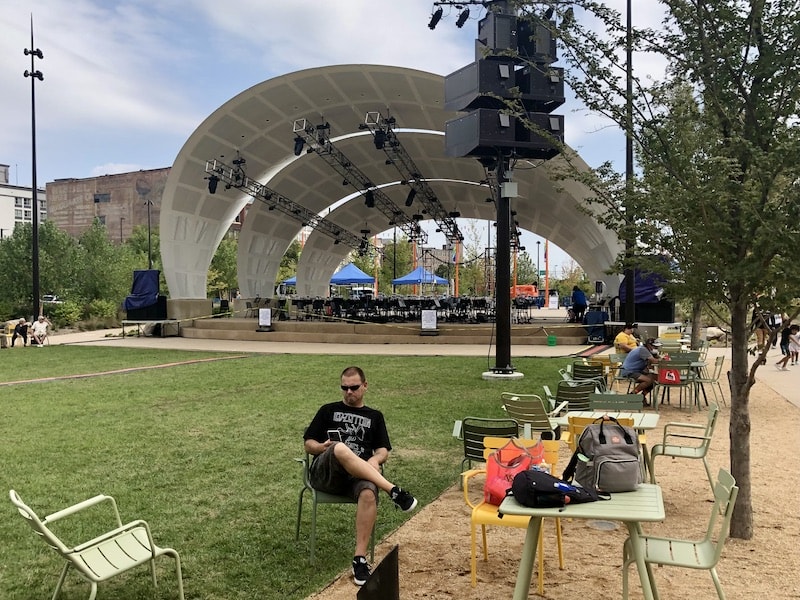
A bandshell for musical and other live performances was built along with a large seating lawn for patrons.
Later phases of Omaha’s riverfront plan continued to develop the park farther up and down the riverfront with condos, office buildings and a beautiful pedestrian bridge crossing over to Iowa.
Over time however, the original vision for the Gene Leahy Mall began to falter.
Designed to be a passive green space, it picked up a reputation for being a hangout for homeless people, unsafe because it wasn’t visible from the street and rundown because maintaining its lagoon and shoreline was a challenge.
Adding insult to injury, Conagra decided to relocate its headquarters to Chicago in 2015, abandoning the campus that was built at such a huge cost to Omaha’s historic architectural fabric.
Fast forward to the past few years.
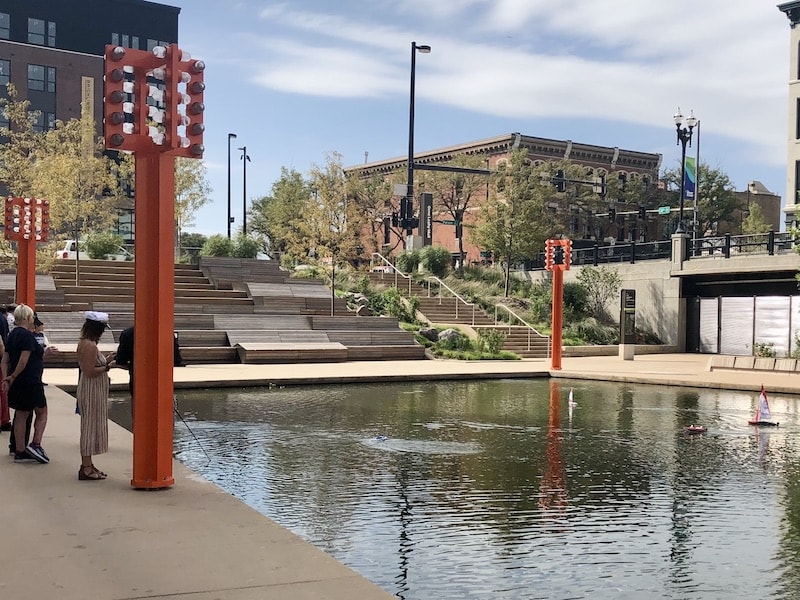
One of the only remaining features from the original park were stepped pools, once of which is now used for model boaters.
In one of the many big public-private partnerships that has helped build the civic assets of Omaha over the decades, an entity called the Metropolitan Entertainment & Convention Authority (MECA) had been created.
MECA was assigned to not only guide and operate the redevelopment of the Gene Leahy Mall, but the two other adjoining riverfront parks.
What is collectively called the RiverFront plan raised $325 million to pursue its ambitious goals, and this not a typo: $275 million came from private donors and the remaining $50 million from the city. Talk about civic philanthropy.
Here comes the restless part.
The Gene Leahy Mall that was barely 40 years old was torn out, its lagoon drained and the site filled to street level.
In its place, OJB Landscape Architecture, the same firm that’s come up with drawings for the proposed South Loop Link, designed an active park with cool playground equipment, a lawn and band shell for performances, seating, sculptures, a dog park and more.
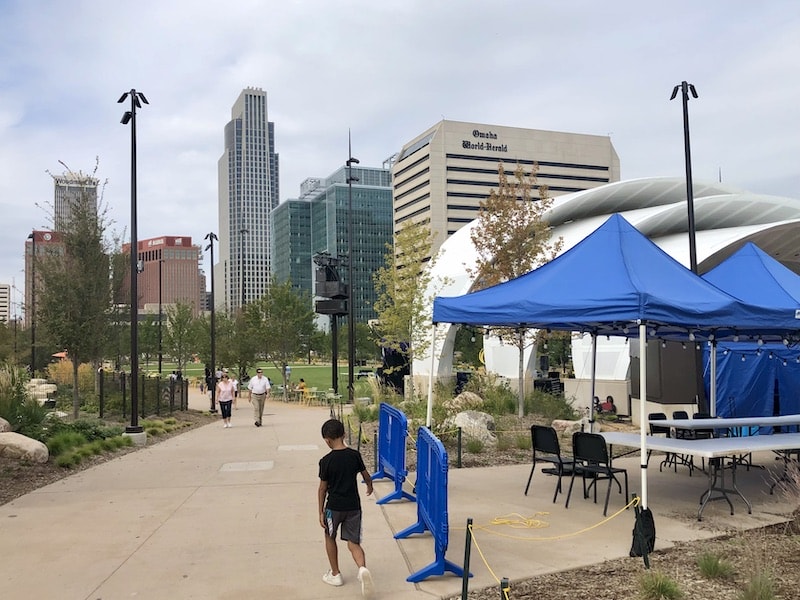
The Omaha downtown skyline overlooks the linear park which originally was built to connect it with the river.
What was left of the old Mall, the stepped pools, was activated with aquatic plants and a pond where kids (and adults) can sail their model boats.
All that remained unchanged from the previous park was a pair of big slides and an archway fragment from one of the historic buildings demolished back in the Seventies.
On a visit last Sunday morning, the place was hopping with families, walkers and a few people staking out places for a concert later that day.
The park was activated.
People were doing things: watching their kids scramble in the playground, exercising their dog, reading the paper before the concert, enjoying the model boats, taking a stroll after brunch at the nearby Old Market historic district.
And that’s the important lesson for Kansas City. We have some big, green spaces in our downtown and riverfront, but there’s not much activating them.
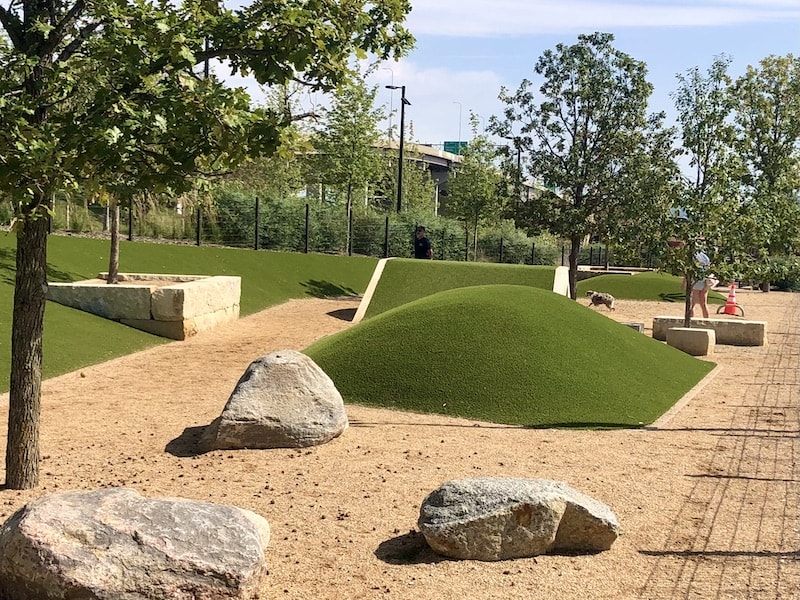
A dog park is part of the many new attractions added to the downtown park.
Berkley Riverfront Park is dull and often deserted; many people probably couldn’t find Ilus W. Davis Park because it’s so low-profile, Case Park is struggling and Washington Square Park only comes alive when there’s festival at Crown Center.
With the streetcar coming to Berkley Park and the KC Current stadium going up next to it, this is the time to introduce the same kind of activities as Omaha is implementing to bring its parks alive and make them a destination.
That’s why the idea of dropping tens of millions of dollars on creating yet another passive park on the old Buck O’Neil Bridge makes no sense.
We have enough green space already downtown. What we need to do is give people reasons to go there with fun programming and engaging attractions.
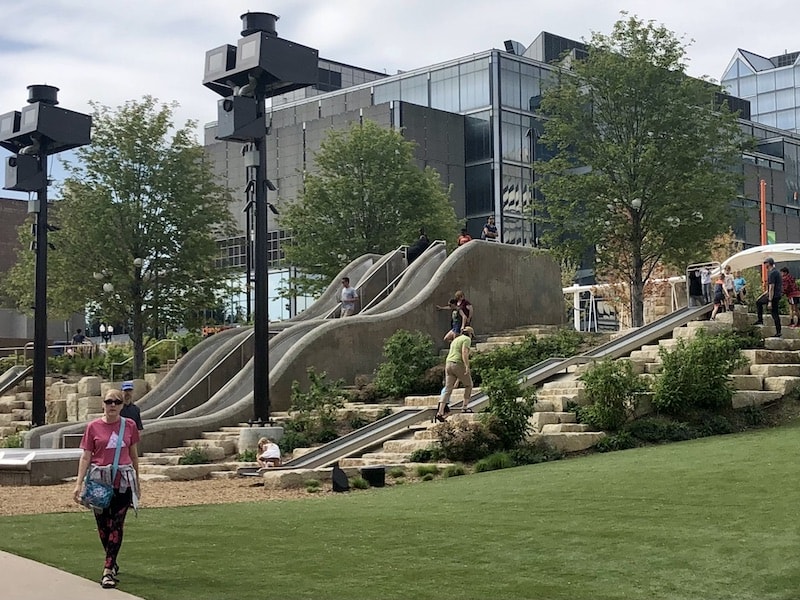
These slides are the only attraction left from the original park design.
Having our philanthropic community step up even somewhat closer to what their hyper-generous cousins north are doing for Omaha would be hugely helpful. The city and the Parks Department have few resources to activate our parks.
All that said, Omaha certainly has its flaws.
Its restlessness has destroyed much of its historic architectural fabric, the latest plan calls for demolishing the library built only 50 years ago and replacing it with a skyscraper for Mutual of Omaha.
The ConAgra buildings are gone and ironically, being replaced with apartment buildings similar in scale to the vanished Jobbers Canyon warehouses.
But Kansas City has a significant flaw too. It’s not restlessness, but complacency.
It’s time to look at what we’ve accepted as okay for too long and up our game. Take a little road trip, you’ll find that other regional cities like Omaha, Oklahoma City, Tulsa, Des Moines and Wichita haven’t stopped striving.


